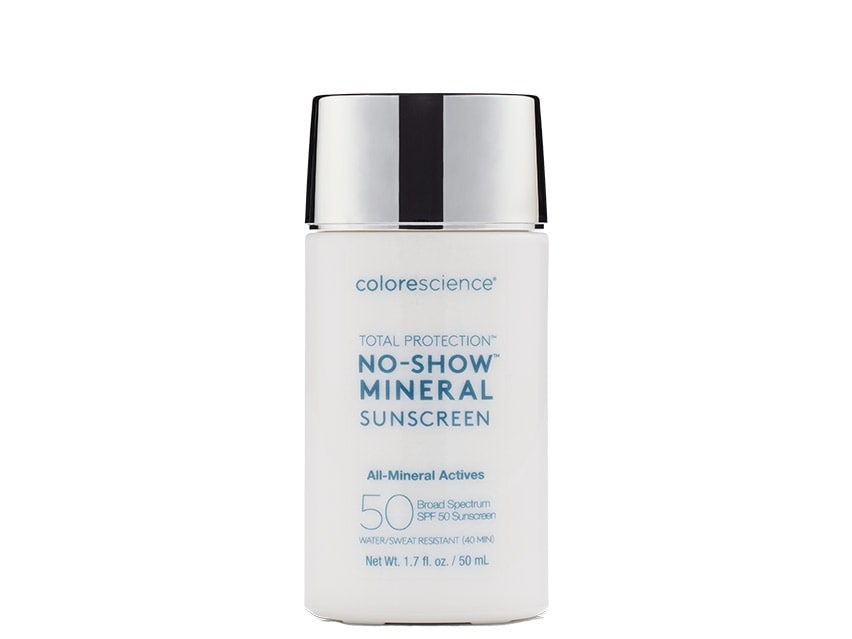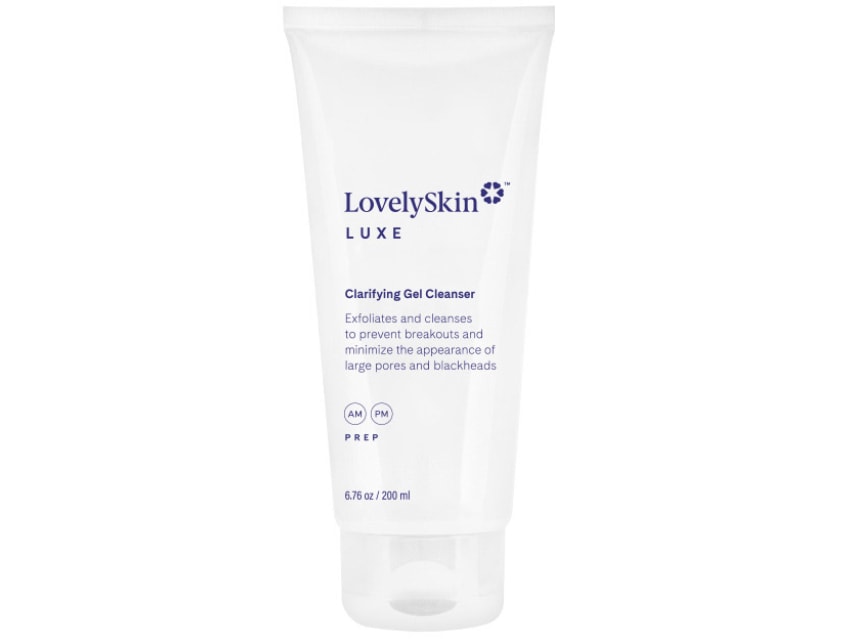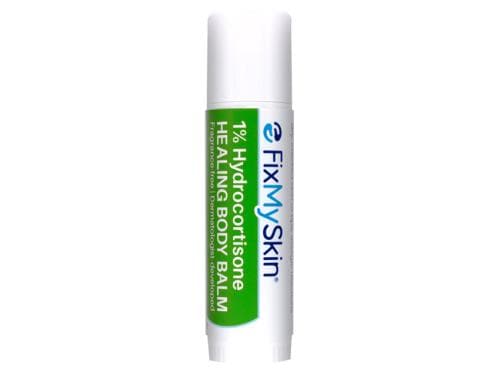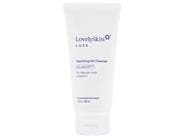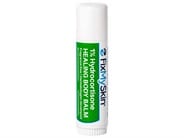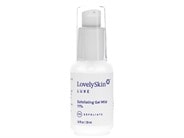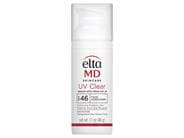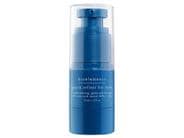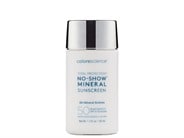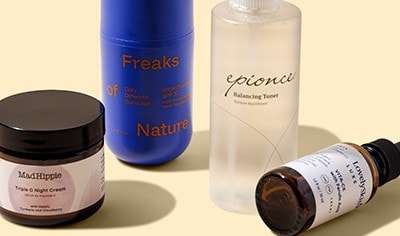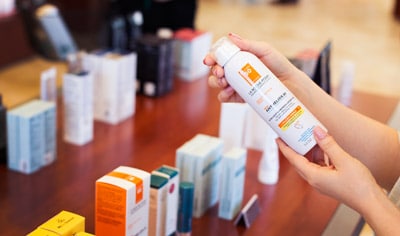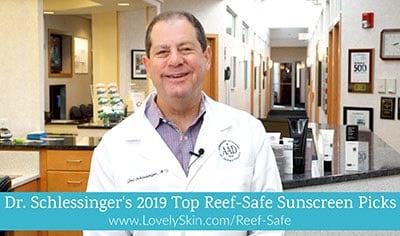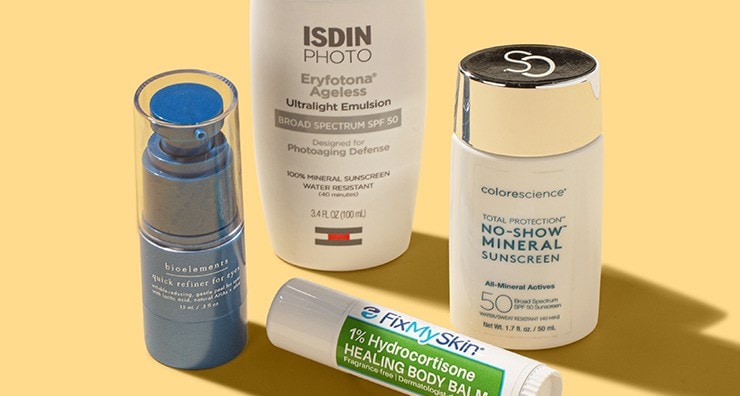
If you’ve noticed white spots on your skin and wondered what they might be, it can take a little investigation. Luckily, their size and appearance can help provide some clues as to what they are and what might be causing them. With the help of board-certified dermatologist and LovelySkin CEO Dr. Joel Schlessinger, we’ll help you get to the bottom of what causes white spots on skin by covering some common skin conditions including:
Why do I have white spots on my skin? 5 possible causes
1. Reverse freckles/idiopathic guttate hypomelanosis
If you’re noticing white spots on your skin that are flat and small in size, they could be idiopathic guttate hypomelanosis, also called reverse freckles. These white spots on skin are a type of hypopigmentation, which occurs when you have lower levels of melanin in your skin. Depending on your skin tone, they might also look pink instead of white.
“These types of white spots are benign, meaning they aren’t cancerous,” Dr. Schlessinger says. “Researchers don’t know for certain what causes them, but UV rays likely play a role because they tend to show up on areas of skin that have seen a lot of sun exposure on older patients who’ve accumulated more time in the sun over the years.” Family history can also play a role when it comes to these kinds of white spots on skin.
Wearing a broad-spectrum sunscreen daily may help prevent this kind of hypopigmentation from forming. For a lightweight mineral sunscreen that wears well under makeup, Colorescience Total Protection No Show Mineral Sunscreen is a great choice. This formula uses Colorescience’s proprietary EnviroScreen Technology to protect skin from UVA and UVB rays and blends into skin with a sheer finish.
EltaMD UV Clear Broad Spectrum SPF 46 Facial Sunscreen combines mineral and chemical blockers for excellent broad-spectrum protection, and it’s an especially good choice for those with acne-prone skin thanks to the inclusion of niacinamide.
For sun protection and anti-aging skin care benefits in one, consider ISDIN Eryfotona Ageless Ultralight Tinted Mineral Sunscreen. It protects your skin with zinc oxide, a mineral sunscreen, while also helping diminish fine lines and wrinkles with photolyase, a plankton-derived enzyme that helps repair sun-damaged skin.
2. Whiteheads
Another type of white spots on skin are whiteheads, which look like small, raised bumps sticking up from your skin. Depending on your skin tone, they might look white or yellow and the surrounding area might look pink or red. “Whiteheads are a form of acne, and they happen when oil and dead skin become trapped inside a pore or hair follicle, causing it to become inflamed,” Dr. Schlessinger says.
Anti-acne products with active ingredients such as salicylic acid, benzoyl peroxide and retinoids can help treat whiteheads and prevent the buildup of dead skin cells that leads to their formation.
Dr. Schlessinger also recommends a pair of products from LovelySkin’s own skin care line, LovelySkin LUXE: the LovelySkin LUXE Clarifying Gel Cleanser and LovelySkin LUXE Exfoliating Gel Mild. Both products contain afaLUXE, a dermatologist-developed blend of amino-based filaggrin antioxidants, Dead Sea minerals and vitamin C. Used in tandem, this gel facial cleanser and treatment serum help encourage natural exfoliation to treat and prevent both whiteheads and other types of acne, including blackheads and pimples.
3. Milia
If the white spots on your skin look like tiny, hard bumps, they may be milia. Unlike a whitehead, they will feel hard to the touch. Milia are harmless keratin-filled cysts that are trapped under your skin, and you might have one (called a milium) or many. When it comes to removing milia, a trip to the dermatologist is in order. “Removing milia is not something you want to attempt at home,” Dr. Schlessinger says. “In the office, your doctor will use a sterile blade or extractor to remove each milium, so your skin can heal.”
You can also read our advice on how to prevent milia by using the right skin care products at home, including exfoliating treatments and broad-spectrum sunscreen. If you’re prone to milia around your eyes, Bioelements Quick Refiner for Eyes is one option that could help. This gentle peel contains alpha hydroxy acids to help stimulate cell turnover around the eyes to help prevent milia from forming.
4. Eczema
Eczema is an itchy skin condition that can cause dry patches on your skin that—depending on your skin tone—might look white, pink or red. Dr. Schlessinger recommends FixMySkin 1% Hydrocortisone Body Balm to his patients who are struggling with dry, itchy patches on their skin from eczema. This medicated balm contains 1% hydrocortisone to help reduce inflammation and itch while a blend of shea and cocoa butters helps soothe skin dryness as well.
5. Vitiligo
Vitiligo is an autoimmune disease that results in pigment loss, causing spots or patches on your skin that look white or lighter than the skin around them. Common vitiligo treatments include prescription steroids, tacrolimus and pimecrolimus ointments or light therapy. Dr. Schlessinger also recommends two Heliocare pills a day to his vitiligo patients.
There’s also a fairly new medication called Opzelura (ruxolitinib), which is a prescription topical cream. Dr. Schlessinger’s office has been involved in the clinical trials for new JAK inhibitors for vitiligo. “The results so far are encouraging and with some luck, we will eventually have both oral and topical treatments that work nicely to restore color on areas that are white,” Dr. Schlessinger says. “Oral medications do have side effects, so that is something I discuss with patients on an individual basis. Topical treatments are with very minimal risk, but at present, they are pricey, so insurance companies often don’t cover them or cover them only partially. The good news is that these treatments will become more widely available over time.”
If you’re looking to help camouflage white spots on your skin with makeup, you can learn more about our recommendations for the best concealers on the LovelySkin Blog.
Shop this blog

About the Author
Aaron serves as Editor at LovelySkin. Since graduating from the University of Nebraska at Omaha in 2016 with degrees in Creative Writing and English, he has immersed himself in the beauty industry. When he’s not writing about the latest beauty trends, he spends time cuddling his dogs, scouring antique stores, playing tennis and hiking.
Other Posts by AaronFollow us on social
Follow us on social networks and be one of the first to learn about sales, giveaways, and free samples

